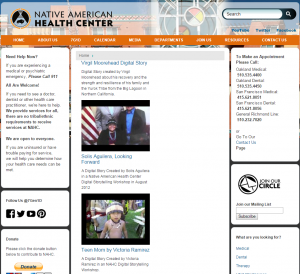In an attempt to delve further into the content of module 2, I searched for a website on recognizing stereotypes and how colonialism has defined Indigenous people. What I came across was a Vimeo video published in 2011 called The Runner. This vignette provides the perspective of Canadian youth, teachers as well as academics on this topic. This video talks about the impacts of stereotypes in general and then focuses on how the media represents aboriginals. The “meat” of this piece is the discussion around how media representation (misrepresentation) of First Nations communities affect the individual. This pieces allowed me to get closer to understanding how stereotypes can impact a culture and begin to see how this can begin to possibly erode a culture.
The use of this technology, the video vignette, provides a forum for communicating identity and stereotypes, with the intent to breakdown the stereotypes for future generations. This video could be useful to high school/post-secondary educators to create a discussion around stereotypes and First Nations populations.
To view this video: http://runnermag.ca/2011/11/stereotypes-of-first-nations/
Ronaye Kooperberg (Module 2 – Blog Post 3)

